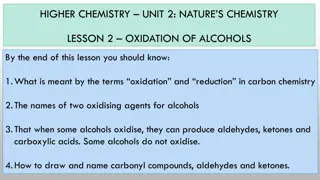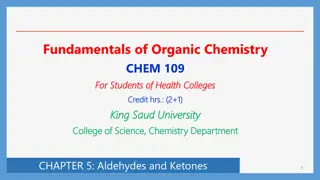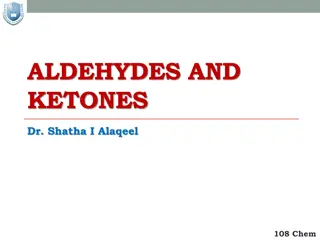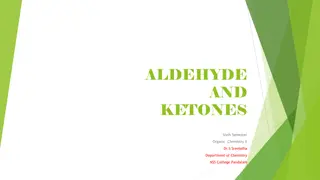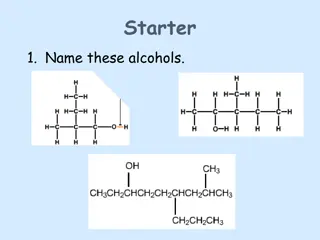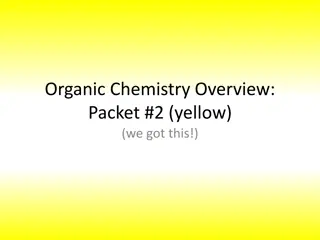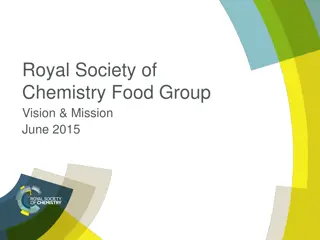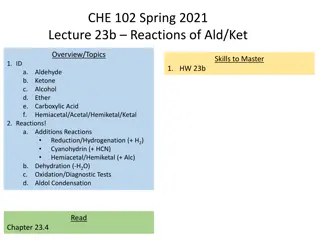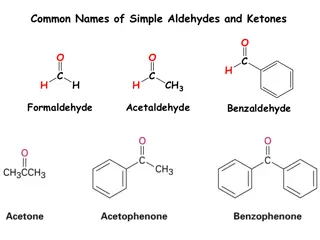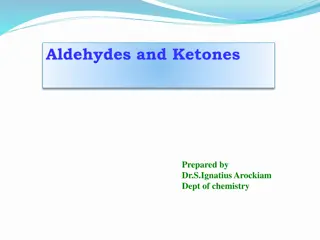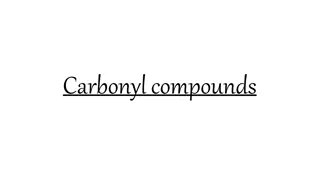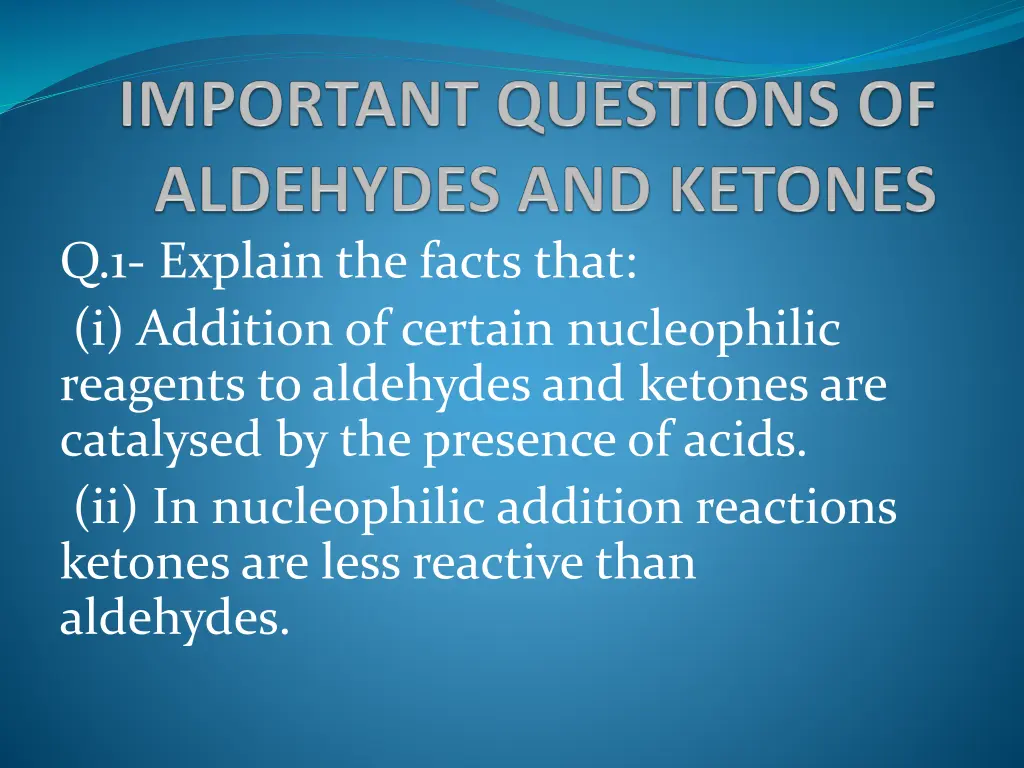
Organic Chemistry Reactions Analysis
Explore the mechanisms of various organic chemistry reactions including nucleophilic additions, Tollens reagent reduction, iodoform tests, Clemmensen reduction, Wittig reaction, and more. Understand why aldehydes are more reactive than ketones and learn about Sarett's reagent, MPV reaction, Wolf-Kishner reduction, and chemical tests to distinguish between different compounds.
Download Presentation

Please find below an Image/Link to download the presentation.
The content on the website is provided AS IS for your information and personal use only. It may not be sold, licensed, or shared on other websites without obtaining consent from the author. If you encounter any issues during the download, it is possible that the publisher has removed the file from their server.
You are allowed to download the files provided on this website for personal or commercial use, subject to the condition that they are used lawfully. All files are the property of their respective owners.
The content on the website is provided AS IS for your information and personal use only. It may not be sold, licensed, or shared on other websites without obtaining consent from the author.
E N D
Presentation Transcript
Q.1- Explain the facts that: (i) Addition of certain nucleophilic reagents to aldehydes and ketones are catalysed by the presence of acids. (ii) In nucleophilic addition reactions ketones are less reactive than aldehydes.
Q.3- Explain the mechanism of the following reactions:
(a) (b) An organic compound having molecular formula C6H12O does not reduce tollens reagent but gives a crystalline derivative with 2,4-dinitrophenyl hydrazine. It also gives iodoform test and produce 3- methyl pentane on clemmensen reduction. Assign a structural formula to the organic compound and write the reactions involved.
Draw the structure of the compound and write the reaction. (b) Explain the mechanism of wittig reaction.
(b) Which of the following will undergo haloform reaction(with reasoning): (i) HCHO (ii)CH3CHO
(C) Why are the aldehydes more reactive than ketones towards nucleophilic addition reaction?
(b) Write a short note on the following (i) MPV Reaction (ii) Wolf Kishner Reduction
(b) Give the chemical test to distinguish between: (i) Methanal and Propanone (ii) Pentan-2-one and pentan-2-al
(b) What is the advantage of oxidation of alcohols with pyridinium dichromate(PDC) Or pyridinium chlorochromate(PCC)?
(b) For Cannizzro reaction, explain why the reaction cannot be used with aldehydes having alpha-hydrogen?

